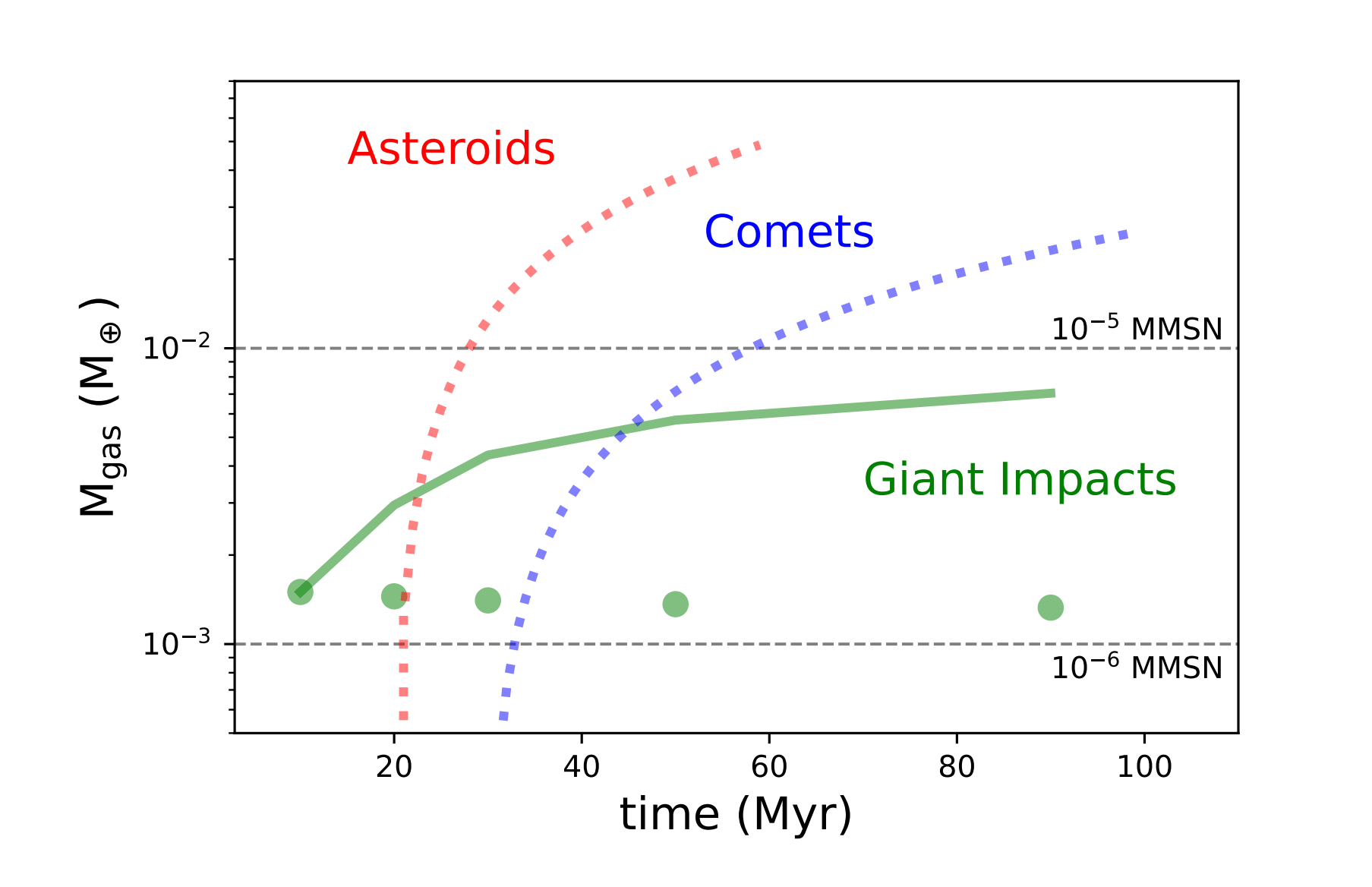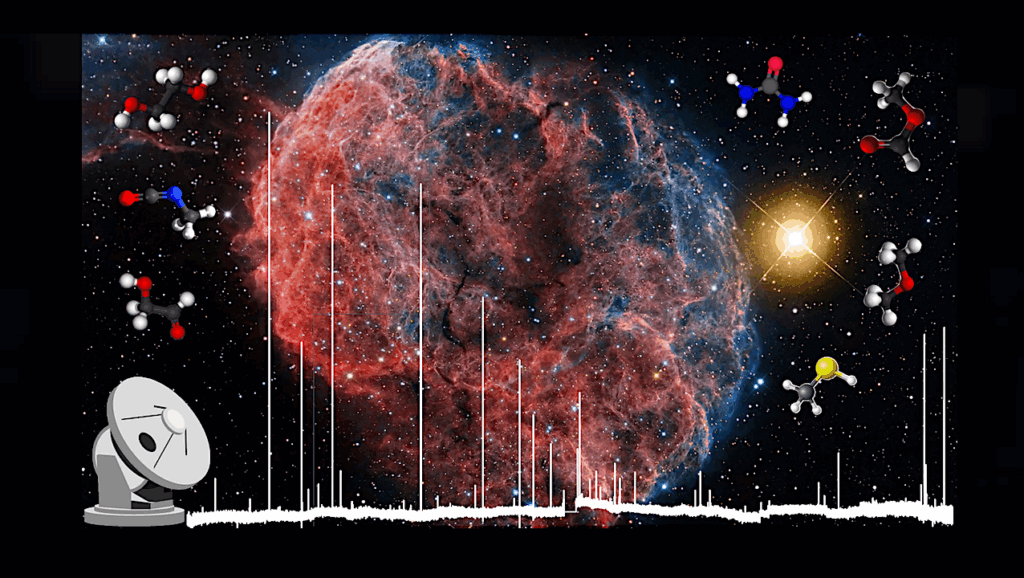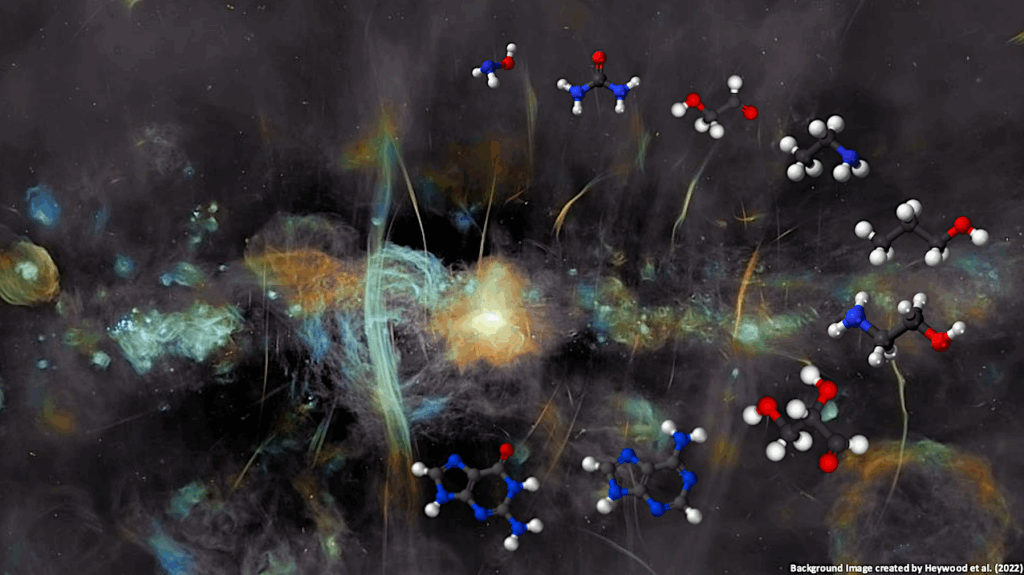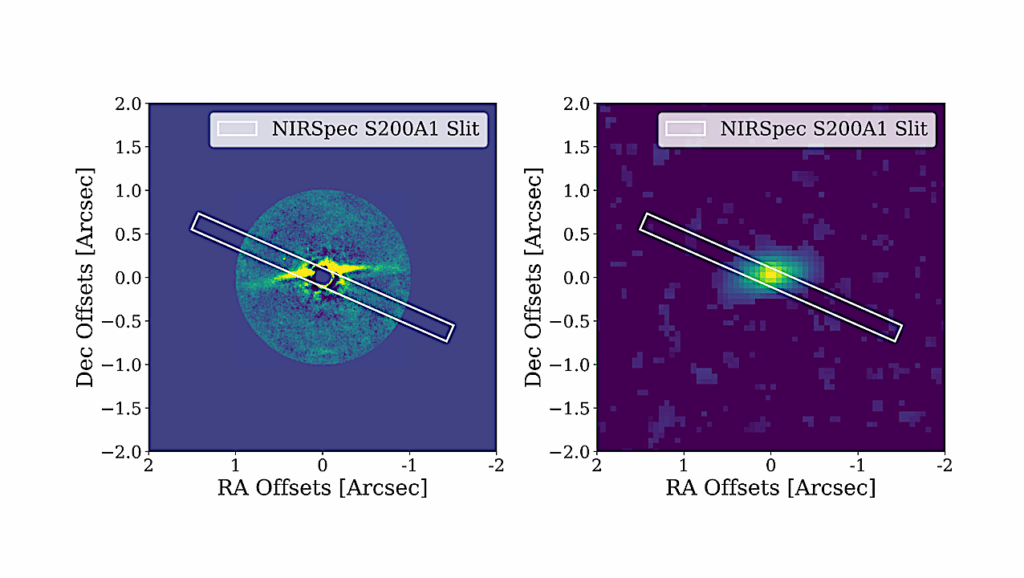Takeout And Delivery: Erasing The Dusty Signature Of Late-stage Terrestrial Planet Formation

The formation of planets like Earth is expected to conclude with a series of late-stage giant impacts that generate warm dusty debris, the most anticipated visible signpost of terrestrial planet formation in progress.
While there is now evidence that Earth-sized terrestrial planets orbit a significant fraction of solar-type stars, the anticipated dusty debris signature of their formation is rarely detected. Here we discuss several ways in which our current ideas about terrestrial planet formation imply transport mechanisms capable of erasing the anticipated debris signature.
A tenuous gas disk may be regenerated via “takeout” (i.e., the liberation of planetary atmospheres in giant impacts) or “delivery” (i.e., by asteroids and comets flung into the terrestrial planet region) at a level sufficient to remove the warm debris. The powerful stellar wind from a young star can also act, its delivered wind momentum producing a drag that removes warm debris.
If such processes are efficient, terrestrial planets may assemble inconspicuously, with little publicity and hoopla accompanying their birth. Alternatively, the rarity of warm excesses may imply that terrestrial planets typically form very early, emerging fully formed from the nebular phase without undergoing late-stage giant impacts.
In either case, the observable signposts of terrestrial planet formation appear more challenging to detect than previously assumed. We discuss observational tests of these ideas.
Joan R. Najita, Scott J. Kenyon
Comments: 20 pages, 3 figures, accepted for publication in ApJ
Subjects: Earth and Planetary Astrophysics (astro-ph.EP); Solar and Stellar Astrophysics (astro-ph.SR)
Cite as: arXiv:2301.05719 [astro-ph.EP] (or arXiv:2301.05719v1 [astro-ph.EP] for this version)
Submission history
From: Joan Najita
[v1] Fri, 13 Jan 2023 19:00:02 UTC (185 KB)
https://arxiv.org/abs/2301.05719
Astrobiology








